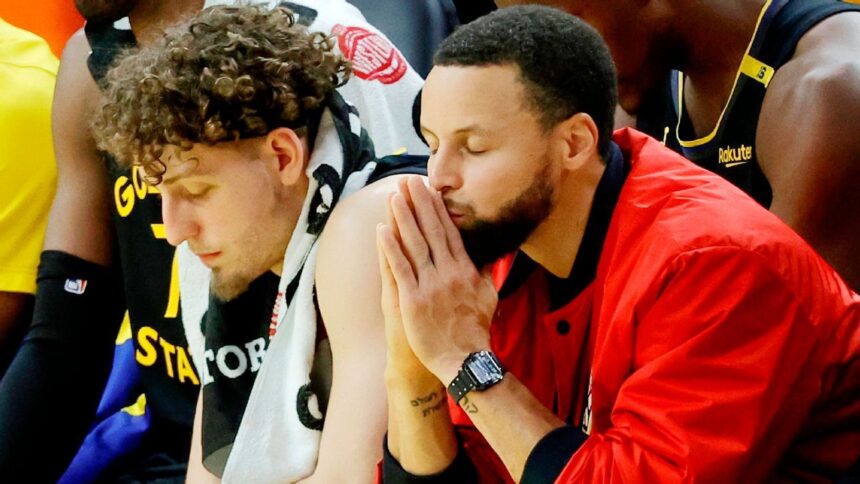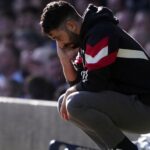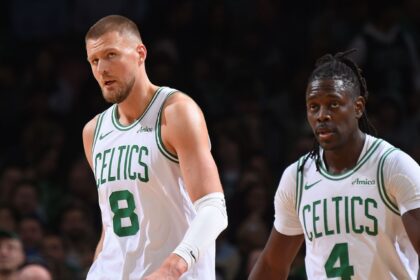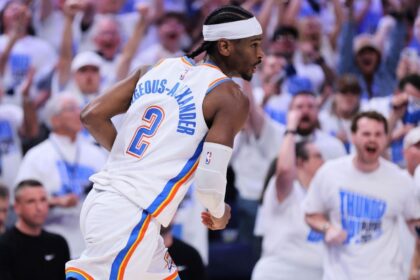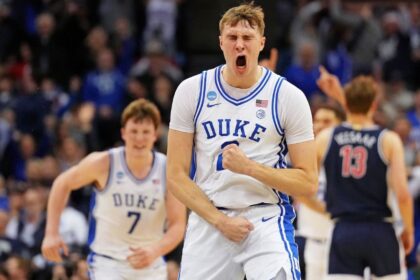NBA Playoffs: Second Round Analysis and Trends
The second round of the NBA playoffs has proven to be a whirlwind of emotions. Road surprises, epic comebacks, and games decided in overtime have marked this crucial phase.
On Tuesday, the number five seeded Indiana Pacers became the first team to advance to the conference finals. In the coming days, three other teams will join them.
As the playoffs continue, with the Boston Celtics and the Golden State Warriors facing decisive games on Wednesday night, we analyze the most important trends of the second round, including which recent champion team has the easiest path.
Celtics vs. Warriors: Who has a better chance of coming back from a 3-1 deficit?
Celtics and Warriors share similarities at this stage. Both aspire to the championship, but a loss would leave them on the verge of elimination, with their top scorer out due to injury.
Boston’s title defense suffered a major blow with the injury of Jayson Tatum, who underwent surgery for a torn Achilles tendon.
On the other hand, the Warriors’ hope lies in the possible return of Stephen Curry, who is recovering from a hamstring injury. However, the Warriors face the challenge of winning a Game 5 as visitors against the Minnesota Timberwolves without Curry.
Without Curry, the Warriors lack offensive firepower. In the regular season, their offensive efficiency was only 107.0 with Curry on the bench, according to Cleaning the Glass. Despite the presence of Jimmy Butler III, their playoff performance has been even worse, with an offensive efficiency of 101.9.
The Celtics have more talent, even without Tatum, and their net efficiency was +7.8 without their star. That gap has widened in the playoffs due to other costly injuries in Boston’s core, making the team more reliant on Tatum’s individual brilliance. Sam Hauser hasn’t played since he injured his ankle in Game 1, and Jaylen Brown and Kristaps Porzingis are not 100%.
Although these limitations hinder comeback hopes, the Celtics’ potential without Tatum is greater than the Warriors’ without Curry. Boston would also play a possible Game 7 at home, while Golden State would have to win away.
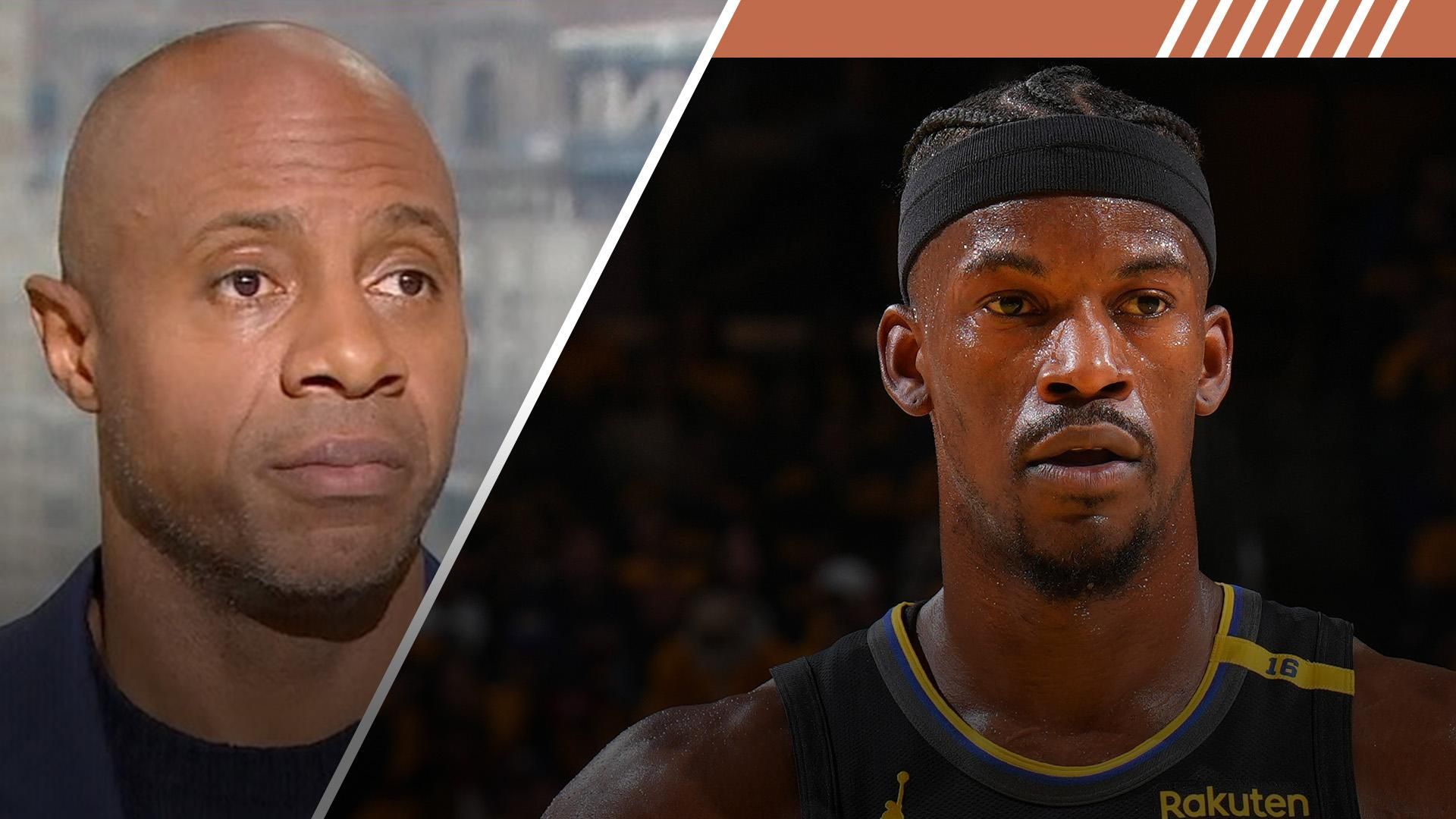
Description: 2:23 ‘What’s happening?’: JWill is concerned after Jimmy Butler played poorly in Game 4. Jay Williams calls out Jimmy Butler after the Warriors forward only made nine shots in Golden State’s loss to Minnesota.
The Timberwolves have dominated for long stretches of these playoffs, overcoming the Warriors and Los Angeles Lakers, while the Knicks have reached crunch time in six of their seven playoff victories. The Knicks have been outscored in the first three quarters in these playoffs, though they are +44 in the fourth quarter and won their only overtime game. That extreme success in crucial moments might not be sustainable, which could give the Celtics a chance to steal some wins, even without their best player.
The prediction models agree that the Celtics have a higher probability of a comeback. ESPN’s Basketball Power Index gives the Celtics a 7% chance of advancing to the conference finals, compared to the Warriors’ 5%.
Defenses in zone are back
NBA teams rarely use zone defenses. According to GeniusIQ, the league-wide breakdown during the regular season was 97% man-to-man defense. The Miami Heat, at 12%, were the only team to reach double digits in zone usage.
But several teams with their backs against the wall have resorted to the zone this year, and the percentage of zone across the league is the highest recorded in any postseason.
The Nuggets are the most prominent example. During coach Michael Malone’s tenure, Denver never used the zone in more than five possessions in any playoff game, according to GeniusIQ, but with David Adelman now at the helm after Malone was surprisingly fired in April, the Nuggets have surpassed that number in each game against the Thunder, going from 10 zone possessions in Game 1 to 13 in Game 2, to 21 in Game 3 and to a staggering 55 in Game 4. This last number is the second-highest for any playoff team in the tracking era (since 2013-14), behind only the Heat’s 58 zone possessions in Game 2 of the 2020 Finals.
That approach has worked for the most part. Oklahoma City has only scored 1.08 points per possession against the Nuggets’ zone, which helps explain the Thunder’s scoring struggles after a regular season in which they ranked third in offensive efficiency.
Cleveland has also joined the zone party in this round. The Cavaliers didn’t play a single zone possession in their first-round sweep against the Heat, because they didn’t need to. But at 0-2 against the Pacers, they placed Defensive Player of the Year Evan Mobley at the top of a 3-2 zone, and reaped the benefits, holding Indiana to 0.70 points per zone possession in a Game 3 victory.
The Milwaukee Bucks, the Houston Rockets, and the Warriors have also employed this strategy during some stretches. Overall, zones have a defensive efficiency of 106 this postseason, compared to 111 for individual half-court defenses. Zone flashes have proven to be an effective change of pace for outmatched defensive units.
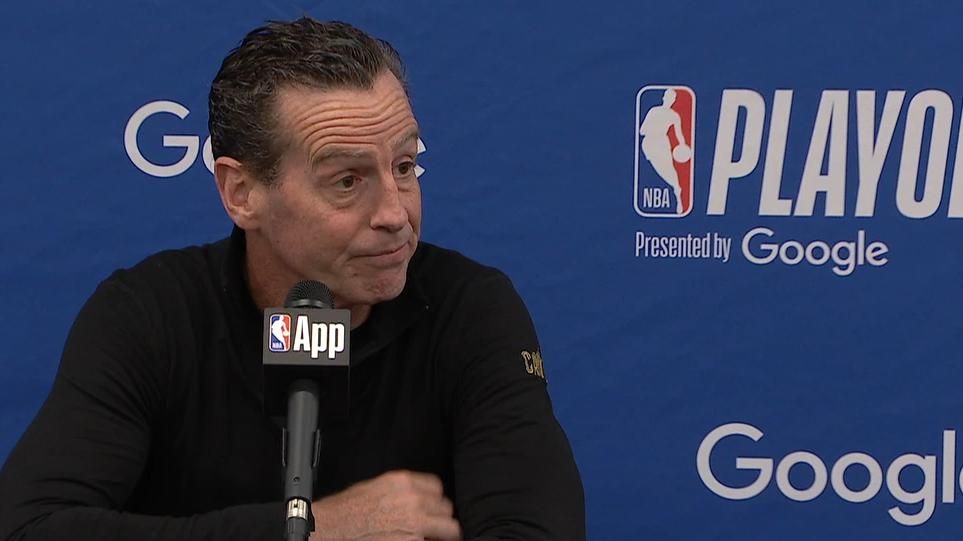
Description: 1:15 Cavs coach calls Pacers’ first half ‘complete domination.’ Cavaliers coach Kenny Atkinson reacts to the Pacers’ dominant Game 4 win.
But zones are not infallible. Last year, zones were worse than individual defenses in the playoffs, yielding 117 points per 100 possessions. This week, the Pacers showed why.
Elite offenses like Indiana’s can exploit holes in any zone. When the Cavaliers tried to replicate their Game 3 success in Game 4, the Pacers were ready. They completely shredded Cleveland’s zone, scoring 1.92 points per possession, essentially the equivalent of an unopposed layup on every trip down the court, before the Cavaliers abandoned that plan. Nobody and nothing has managed to slow down the Pacers’ torrid offense yet.
Jonathan Kuminga is making a lot of money in this round
Kuminga, the No. 7 pick in the 2021 draft, is approaching restricted free agency this summer. (Golden State will be able to match any offer). And until last week, it seemed that he had lost the confidence of coach Steve Kerr and, therefore, the possibility of a big payday this summer.
Kuminga did not play in the Warriors’ play-in game against the LA Clippers to end the regular season, nor did he appear in their actual play-in game against the Memphis Grizzlies. In the first round against the Rockets, he sat out four of seven games and made only 30% of his shots when he played.
But then Curry injured his hamstring, and Kerr, desperate for any offensive spark, was forced to call on Kuminga once more. The 22-year-old forward has made the most of his renewed opportunity, even as his team falters: In the last three games, against an elite Minnesota defense, Kuminga is averaging 23.7 points on 60% shooting, generating seven free throw attempts per game.
He has been Golden State’s most consistent offensive force in this series, proving he deserves a longer look in a more significant role next season. Whether in a Warriors jersey or for a rival contender seeking opportunities, a team will pay Kuminga to give him that chance.
Ty Jerome is costing himself a lot of money in this round
The opposite of Kuminga resides in Cleveland, where Jerome enjoyed a highly successful season for the Eastern Conference’s No. 1 seed. Jerome averaged 12.5 points in 19.9 minutes per game and made 44% of his three-pointers on his way to a third-place finish in the Sixth Man of the Year voting. Jerome continued that streak with an excellent performance against the Heat in the first round (16.3 points per game, 50% on three-pointers).
Jerome couldn’t have picked a better time for this breakthrough, because he will be an unrestricted free agent this summer. Last year, another sixth man guard, Malik Monk, signed a four-year, $78 million contract to remain with the Sacramento Kings. Could Jerome have entered that neighborhood on the open market? Maybe, but that possibility seems significantly smaller after Jerome’s failure against the Pacers.
With Darius Garland injured, Jerome scored 21 points on 20 shots in Game 1, then went 1-of-14 in Game 2 and was the defender who lost track of Tyrese Haliburton on the Pacers’ game-winning shot. Jerome had another slow start in Game 3, shooting 1-of-8, and by that point coach Kenny Atkinson had seen enough. Jerome played just 13 minutes, by far his lowest total of the postseason, as Sam Merrill leapfrogged him on the depth chart. By Game 5, Jerome didn’t get off the bench until the second half.
Already facing financial pressures as a team projected in the second apron next season, the Cavaliers might now conclude that it’s not worth retaining Jerome if he can’t even stay on the court in their most important games. And Jerome’s struggles in the playoff pressure cooker could also scare off potential suitors who might otherwise be interested in seeing what he could do with more touches.
OKC’s Tailored Use of Alex Caruso is Paying Off
Let’s finish with a more detailed analysis of one of the best role players in the NBA. Caruso is not just an elite defender compared to his peers; it’s no exaggeration to say he’s one of the best defenders of the 21st century.
According to xRAPM, an advanced metric that measures a player’s impact based on factors such as individual statistics and their teammates, the most valuable defenders in the play-by-play era (since 1996-97) are, in order: Kevin Garnett, Dikembe Mutombo, Caruso, Draymond Green, Rudy Gobert, Tim Duncan, and Ben Wallace. Caruso is surrounded by Defensive Player of the Year winners, and he and Tony Allen (18th) are the only guards in the top 25.
The Thunder knew what they were getting when they traded Josh Giddey for Caruso last summer. Caruso won’t post the same flashy stats as Giddey, but the former champion with the Los Angeles Lakers fits much better as a playoff option.
The only problem with Caruso’s game is that he has been injury-prone throughout his NBA career, thanks to his high effort and physical style. So the Thunder took an individualized load management approach for him this season, as Caruso played his fewest minutes since 2018-19. He took many days off (as a non-All-Star, he is not subject to the league’s player participation policy). Caruso’s season high in minutes was 31, in a two-point win over the Clippers in March; that was his only regular season game with more than 27 minutes played. By comparison, Caruso played more than 27 minutes in 47 different games as a member of the Chicago Bulls last year. Coach Mark Daigneault has continued to conserve Caruso in the playoffs. After all, he only has so many jumps and strides and effort plays in his body; why waste them in games that the Thunder is already guaranteed to win? In Game 1 against Memphis, Caruso was a plus-30 in 12 minutes in the first half, despite not attempting a shot. The Thunder was winning in a blowout, so Caruso did not come off the bench after halftime. Similarly, in the Thunder’s blowout of the Nuggets in Game 2, Caruso played 10 minutes in the first half and then sat out the rest of the game. But in close games, Caruso looks fresh, plays more, and shines. He caused several important steals in the Thunder’s big comeback win in Memphis in Game 3. He added 20 points, 6 assists, 5 steals, and 2 blocks in Game 1 against the Nuggets. And he helped stabilize the Thunder on both ends in a Game 4 win-or-go-home in Denver.
The Thunder closed that game with a lineup of Caruso, Shai Gilgeous-Alexander, Jalen Williams, Chet Holmgren, and Isaiah Hartenstein, their starting lineup but with Caruso in place of Luguentz Dort. That particular quintet didn’t play a single minute together in the regular season, but it could be Daigneault’s best unit available. In any case, Caruso deserves an even bigger role in the future. According to box plus-minus, entering Tuesday’s games, Caruso had been the second most valuable player per minute in this year’s playoffs, only behind Giannis Antetokounmpo. And the Thunder had a net efficiency of plus-22.7 with him on the court. (The top three players in net efficiency in the playoffs are Cason Wallace of OKC, Caruso, and Aaron Wiggins, which underscores how productive their bench has been).

